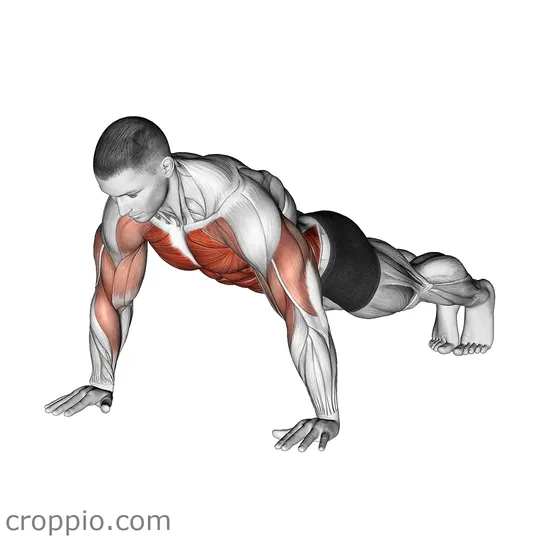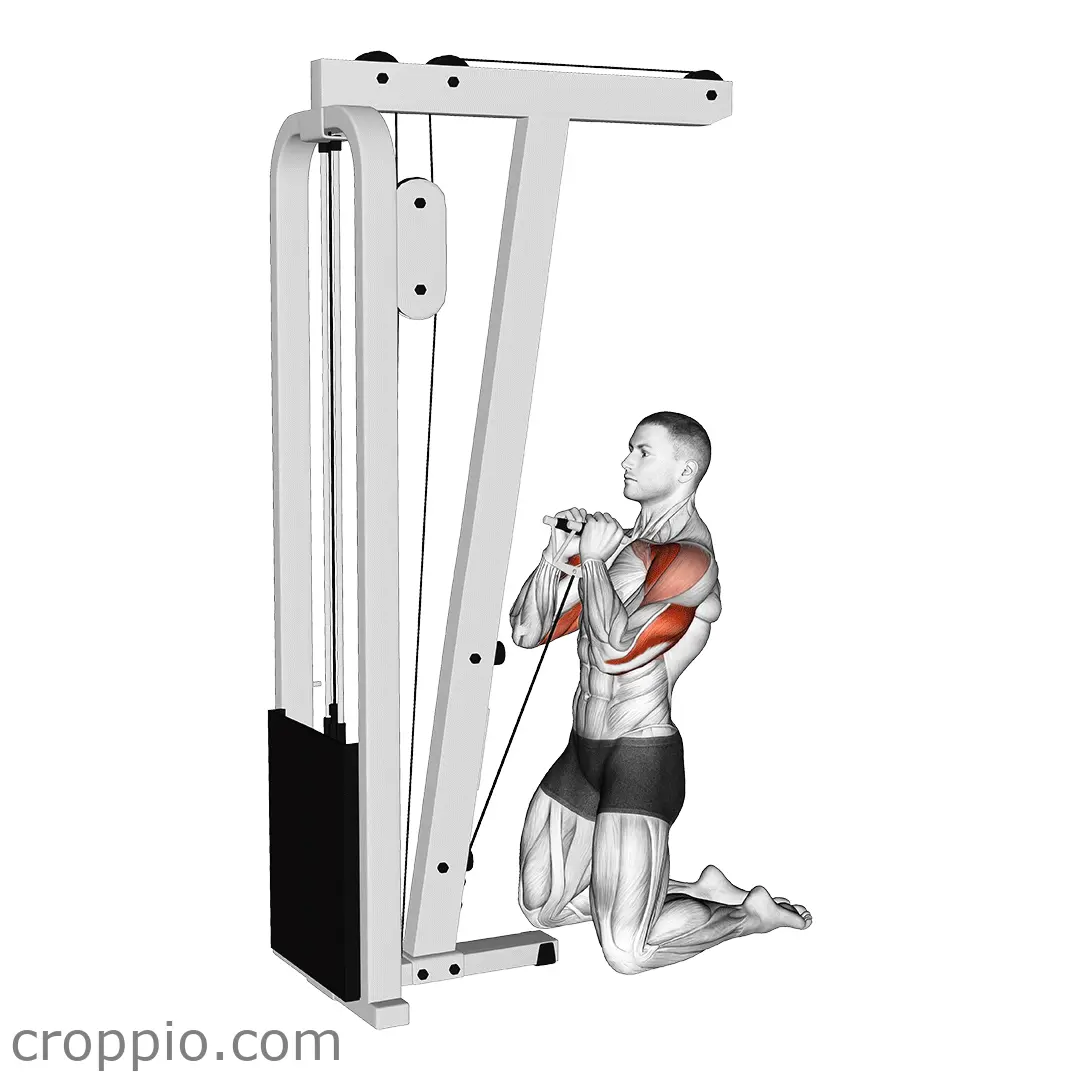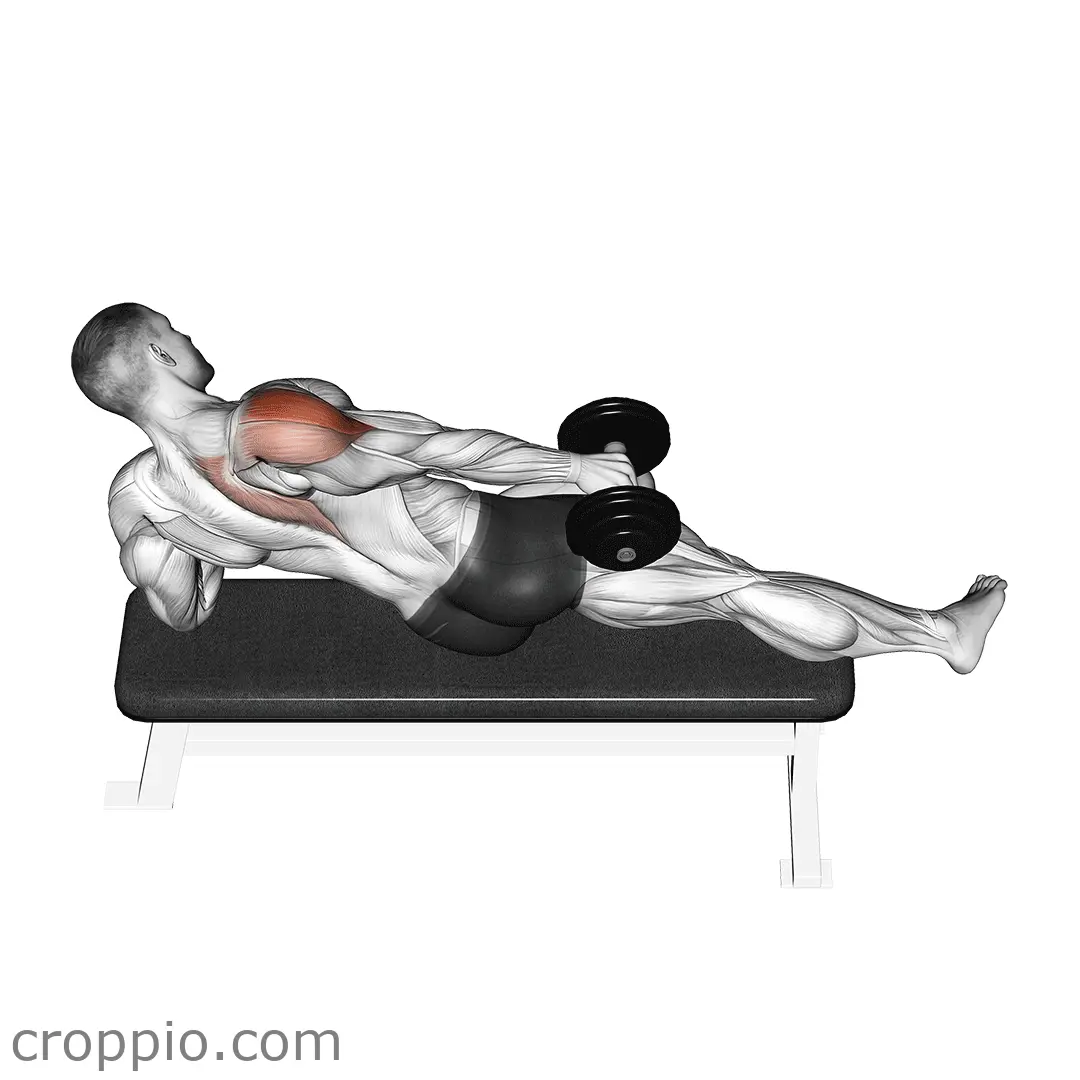Shoulder Tap

Muscles Involved
The shoulder tap is an effective bodyweight exercise that primarily targets the deltoids, particularly the anterior (front) part. Additionally, it engages the core muscles, including the rectus abdominis and obliques, as stability is essential during the movement. Secondary muscles worked during this exercise include the triceps and the muscles of the upper back, such as the rhomboids and trapezius, as they help stabilize the shoulder girdle. Overall, shoulder taps promote muscular endurance and coordination throughout the upper body and core.
Top Mistakes
- Hips Swaying: One common mistake is allowing the hips to move excessively from side to side, which reduces the effectiveness of the core engagement.
- Prolonged Neck Strain: People often hold their heads too high or low, leading to neck strain; maintaining a neutral neck posture is crucial.
- Incorrect Hand Placement: Not placing the hands directly under the shoulders can result in an unstable base, increasing the risk of injury.
Execution Tips
- Start in a Solid Plank Position: Your body should form a straight line from head to heels, with your hands under your shoulders and feet hip-width apart to maintain balance.
- Engage Your Core: Tighten your abdominal muscles before initiating the movement to stabilize your torso and avoid swaying.
- Control the Movement: Bring one hand to tap the opposite shoulder smoothly and return to the plank position without shifting your hips.
- Maintain Breathing: Exhale while tapping your shoulder; this can help you stay focused and maintain core tightness.
Workouts
The shoulder tap can be easily incorporated into various workout routines. For beginners, start with 3 sets of 8-12 repetitions per side, taking a brief rest in between sets. For more advanced practitioners, increase intensity by performing 4-5 sets or incorporating shoulder taps into circuit workouts alongside other exercises such as push-ups, burpees, or plank variations. As you progress, consider adding tempo variations or performing shoulder taps with a stability ball for additional challenge.
Conclusion
The shoulder tap is a versatile exercise that not only strengthens the shoulders and core but also improves coordination and balance. Its ability to be modified for various fitness levels makes it a valuable addition to any workout program. By focusing on proper form and execution, one can enjoy the abundant benefits, including enhanced stability, muscular endurance, and a well-rounded fitness experience.



